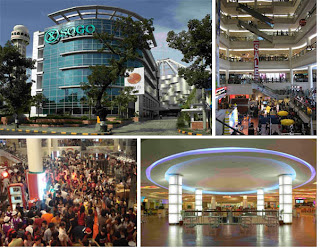A reader left me a comment recently:
"Many AK shares like CDG and APTT have gone up. I hope AK didn't dispose them."
Why would I sell them before?
I like being paid while I wait.
This is something I have said many times before.
Therefore, regular readers would find this quite familiar.
We buy undervalued income producing assets, receive dividends while waiting for Mr. Market to turn realistic.
We could even buy good income producing assets at fairer values, receive dividends while waiting for Mr. Market to turn optimistic.
When Mr. Market is greedy, the wait is over.
Having said this, regular readers would also be familiar with the phrase "trading around a core position".
Although I will sometimes sell into a market rally to lock in some gains, I always stay invested for income, retaining a core position.
I am an income investor at heart and more so now as a retiree but there is also no accounting for Mr. Market's moods which means staying invested is probably sensible.
Despite the fact that there are negative divergences aplenty, the bull might have legs and market euphoria could last longer.
Some readers who attended "Evening with AK and friends" might remember the way I explained what a negative divergence was.
An example is as the share price goes higher, trading volume dwindles.
Volume is the fuel that drives rallies.
If volume dwindles, the rally could be ending.
There are potential double tops as well.
We see this when the share price, having retreated from a high, tries to go higher but fails.
As prices retest recent highs, we want to see higher highs forming on the momentum oscillators such as the MACD.
If we see lower highs in such instances, we have a negative divergence.
Mr. Market's euphoria could be sputtering.
I have trimmed my investment portfolio by some 25% to 30% since my last blog post.
So, as you can see, it is not an overly big reduction.
I have sold into the rally but I am staying invested.
The rally is also a good opportunity to sell stocks which are more speculative like APTT.
APTT was really too cheap to ignore and regular readers know I was gobbling as its unit price plunged.
At one stage, it went under 13c a unit and, of course, I bought more.
The market rally has allowed me to book a gain on my investment in APTT which, I won't deny, is a pretty speculative position, whichever way we cut it.
A couple of stocks which received greater attention were SingTel and Wilmar, which I bought more of as their share prices plunged in the last one year or more.
Like APTT, they have paid me dividends while I waited.
I decided to reduce my positions in SingTel and Wilmar heavily because, to me, their charts show obvious negative divergences.
Could we see $3.00 to $3.10 a share for SingTel and Wilmar again in the next few months?
It is a rhetorical question, of course.
Certainly, we cannot predict but we can prepare.
There is no better way to be prepared than to have a full war chest.
AK's war chest says:
"Burp. Pardon me."

So, what do I do now?
I go back to being paid while waiting (and playing Neverwinter).
I am just talking to myself, of course.
Related posts:
1. Wilmar.
2. SingTel and CDG.
3. 2018 passive income and APTT.
4. Make investing easy with 3 things.
Recently published:
Ascendas Hospitality Trust.














































